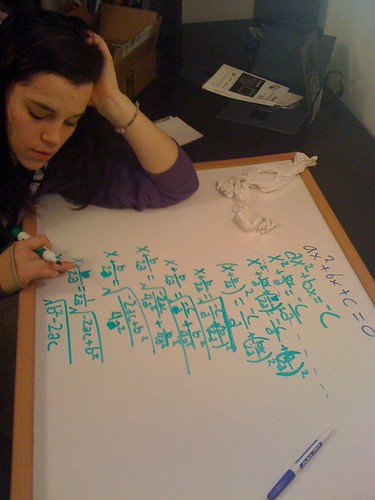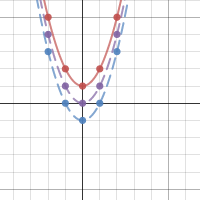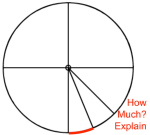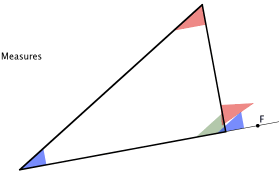We all have our methods of helping students gain an understanding of this:

Let’s start simple as most of us do in the classroom. In years past, I (and many others) have helped students explore this concept with something like:
This concept develops as students explore more. They learn that operations inside the primary piece of the function have horizontal effects, while outside correlates to vertical changes. Easy enough. But then, it happens.
Student: “Mr. Butler, I get that plus or minus moves the parabola. But how come when you do vertical is goes the way it’s supposed to, and sideways is like opposite.”
Butler: “That’s a great question. What do you mean by opposite.” (trying to get the student to articulate more specifically what he/she is trying to say while I ponder it myself in hoping to come up with an appropriate answer).
S: “Like vertical stuff goes up for plus, down for minus. Just like the graph”
B: “What do you mean the graph?”
S: “The axis. The y-axis. But then for the other axis, the x-axis, it moves opposite. Like negative is left, but when it’s minus it goes right. And positive is right, but when it’s plus inside the parabola goes left.”
B: “Who else sees the pattern, or something like it?”
Lots of Hands.
B: “Well, you see whenever its inside, the transformation is opposite. We’ll see more of that when we look at multiplying too.”
Cue the tilt head, “Huh?” OR “Oh …..I get it,” fake voice.

This process with examples didn’t answer the question conceptually, it just confirmed that there’s a pattern. Yes, inside opposite, outside normal. But why?
There’s an opportunity here to go deeper. Something that I explored with students was the idea of changing inputs and outputs. I’m pretty sure you’ve heard of the function machine:
Credit: Chris Robinson via 101qs.com
Students get this, kinda. You choose an input, do some math, then get an output. It’s helpful to reference the inside and outside as add-ons to the machine.
Students can kinda get a grasp on that, but it’s still abstract. So we iterate with a few different function machines: quadratic, cubic, and maybe even some square root functions.
We often lean on words like shift and stretch, and then that whole confusion with the opposite comes in. What is the opposite of stretch? Do we say compress? Can we compress by a negative? What does that look like? In this case many would favor more appropriate vocabulary like translate, reflect and dilate. Either way through repetition and memorization we hope our students can eventually break down the effects of a,b,h and k for:

Wait, do we really understand what’s going on with the inside/opposite confusion yet?
Finally, Some Insight with the Inside
When we are making a change to the inside, we are making a change to the input, before it goes into the function machine. That’s like making a change to all the inputs at the same time. We conveniently have an organized visual set of the inputs: the x-axis. So any change to the inside/input is actually a change to the x-axis. Play with this and see if it starts to conceptualize a little better for you now.
The Applet

I’m not opposed to starting simple. In fact, I’m all for it. There are so many layers in function transformation and it takes a while to handle what’s really going on under the hood. I do suggest that once that question of “Why?” is primed and ready, get the students to explore with this.




























